Glyphosate weedkiller is a superhero of farm sprays.
It was introduced 40 years ago, quickly became one of the top-selling herbicides in the world and remains so to this day. No subsequent herbicide has matched it for effectiveness.
Yet EU farmers could now lose it.
The original Roundup brand was launched on the Irish market in the late 1970s. It was aimed primarily at tillage farmers for killing off strong stands of scutch grass ahead of ploughing.
It was introduced as one formulation which was 360g per litre of the active ingredient, glyphosate.
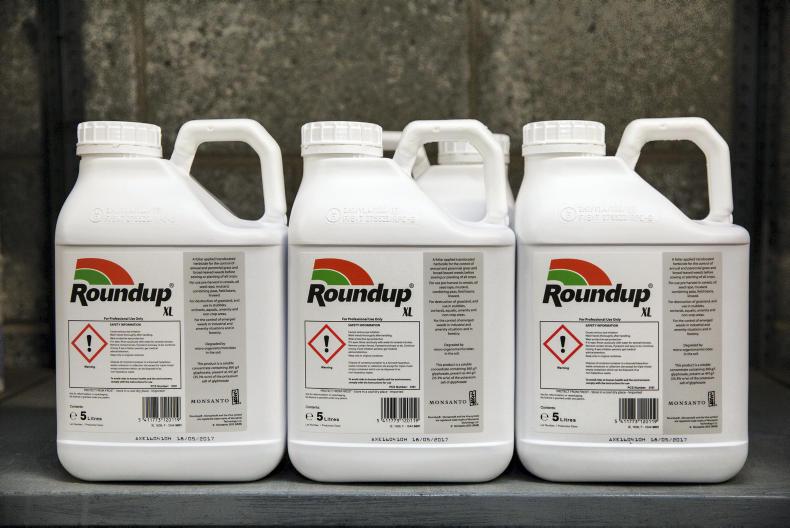
Roundup spray containsthe active ingredient glyphosate. \ Donal O'Leary
Roundup was quickly seen as effective in tackling a grass weed that was otherwise very difficult to control. But it didn’t become an instant hit because its price was so high.
Older readers will recall buying 5l containers of Roundup for £350 plus VAT, the equivalent of €440 plus VAT. At the time, 10-10-20 fertiliser cost the equivalent of €160/t.
Response
The response from tillage farmers was to cut rates back from that recommended on the label.
They explored using various cheaper additives in the tank to help maintain efficacy at lower rates.
These additives were also aimed at countering the herbicide’s one big weakness – its susceptibility to being washed off by rain after spraying.
The label requirement was six dry hours after spraying to get the active ingredient into the targeted plant.
These homemade additives included a squirt of washing up liquid in the tank to increase penetration through the tough leaf and stem of scutch.
Someone, somewhere, somehow discovered that adding a little sulphate of ammonia fertiliser to the spray tank could also maintain efficacy at lower rates.
In the 1980s, Irish tillage farmers took more interest in the formulation of Roundup than in any other plant spray
Even adding a pint of diesel to a 200gal tank helped. It’s fair to say that in the 1980s, Irish tillage farmers took more interest in the formulation of Roundup than in any other plant spray they used.
A number of chemical companies saw a gap in the market and introduced branded additives to be used with Roundup and farmers switched to using these.
Pirate material
The combination of glyphosate’s effectiveness and high price led to the arrival of spurious versions. They appeared in Ireland in the mid-1980s, manufactured on the continent and about 25% cheaper than Roundup.
Monsanto responded by introducing new formulations with better adjuvants which further increased the products’ efficacy. But the competition lowered the price of the basic Roundup product. By this time, it was being bought for about £100 plus VAT per 5l, equal to €25/l.
Off-patent
Glyphosate finally went off patent in Europe in the early 1990s and this led to the overnight appearance of a large number of generic formulations, ie fully legal herbicides containing glyphosate made by other chemical manufacturing companies.
Many new brands went on sale in Ireland, with the best known being Gallup, manufactured by Dublin-based Barclay Chemicals, as well as Pride and Total. Again, Monsanto responded by introducing new, improved formulations of what was now a suite of Roundup products.
By the early 2000s, the price of standard 360g/l glyphosate formulations collapsed to as low as €2/litre.
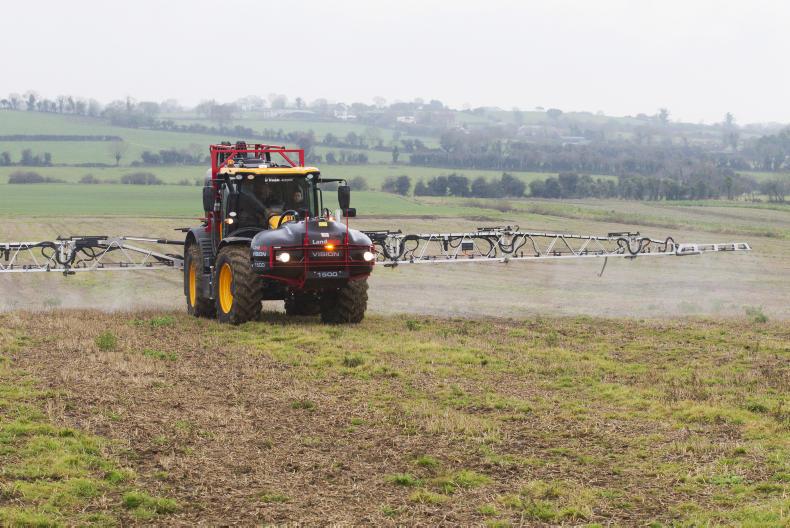
Cash cow
Monsanto doesn’t reveal the profits made from glyphosate, but it has been a moneyspinner, despite competition.
Monsanto was unusual in that it produced no follow-on sprays that were successful in these islands, other than improved formulations of glyphosate.
This was partly because Monsanto was not a narrowly focused agrochemical company. Since being formed in 1901, its interests varied widely from medical chemicals to electronics to industrial and food chemicals.
It produced DDT in the 1940s, Agent Orange used by the US army in the Vietnam war and further chemicals used in the US armament industry.
Seeds of trouble
In the late 1980s Monsanto began trials of crops genetically engineered to be resistant to glyphosate. Other companies researched other GM traits.
Today millions of hectares of GM maize, soya beans and other crops are now grown around the world.
GM isn’t on the radar of Irish farmers as there are no relevant crops. But it has helped global crop output outstrip global demand in the past decade, lowering crop prices everywhere. The technology has benefited biotech companies and consumers – but not Irish farmers.
In the early 2000s, GM companies, and Monsanto in particular, became the target of environmental campaigners, particularly in the EU.
It didn’t matter that the technology was judged safe by regulators or that it further lowered the price of food. Food was already cheap enough and further reductions don’t entice.
The US company became a focus of fascination and even hatred in leafy, middle class Europe, not unlike Donald Trump in 2017.
This public awareness of Monsanto explains why there has been such a large reaction in the EU to a finding by the WHO that glyphosate is probably carcinogenic to humans. Little attention is paid to many other products in everyday use which are accepted as being carcinogenic.
Uncertain future in Europe
A ban would be a problem for the EU’s tillage farmers, particularly those in Ireland. Farmers would have to use multiple products in multiple applications to grow their crops and would not achieve the same control of weeds.
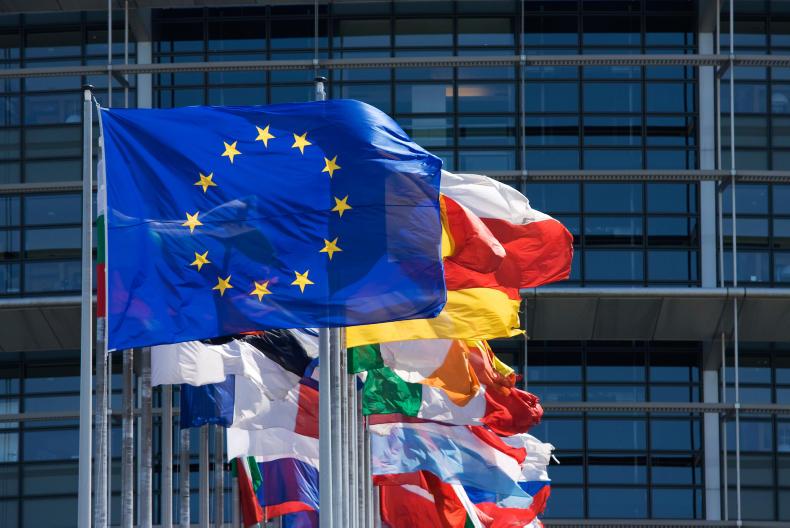
Irish farmers would face a rise in costs – without any corresponding rise in crop prices. There is no serious move elsewhere in the world to ban glyphosate.
Certain weeds would again become problematic. Scutch grass would re-emerge as a major headache, possibly requiring mechanical control or new rotations. Loss of glyphosate would lead to a further decline in cereal production in Ireland.
Glyphosate had and still has a number of unique selling points. It is what is loosely called a “total” weedkiller. It can kill virtually all annual plants, once timing and rate of application are correct.
It is also very effective against many important perennial weeds that are otherwise very difficult to control, as it moves down into roots, stolons and rhizomes.
It is relatively safe for an operator to use – certainly far safer than many other herbicides Irish farmers used. A number of other total herbicides were sold in Ireland, eg Basta and paraquat. But none could match glyphosate’s control of scutch and other perennial weeds.
Scutch –nightmare in the fields
No conversation about glyphosate is complete without considering scutch grass. It is one of the most challenging weeds that farmers in Ireland and across northern Europe must contain.
It competes strongly with cereals and other crops and is more damaging to crop yield than most other weeds.
A serious infestation can make harvesting difficult, particularly if weather is broken.
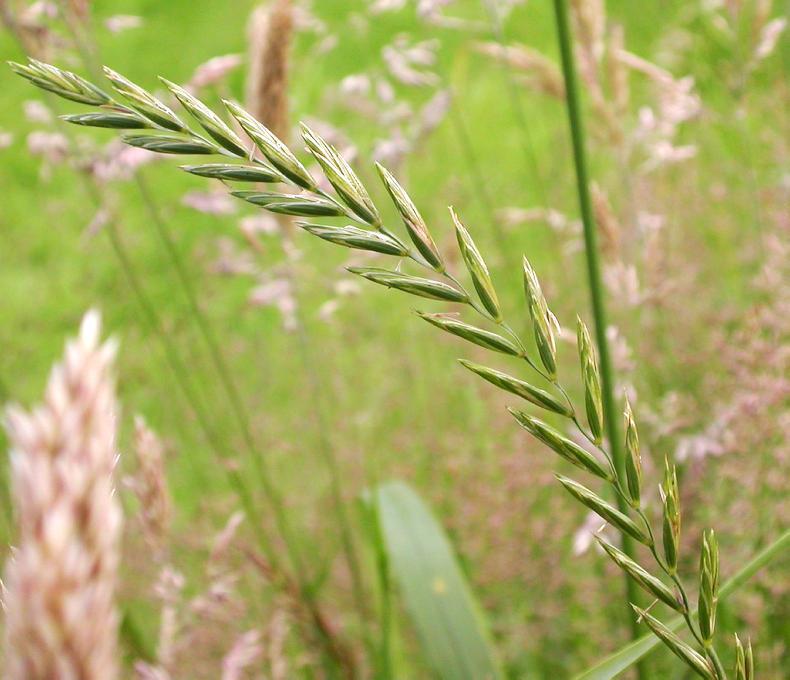
The spike or ear of common scutch grass showing the seed spikelets lying flat to the stem.
Scutch is a perennial plant – a serious infestation in a field this year will be worse next year.
Before the arrival of herbicides and particularly glyphosate, scutch was tackled by cultivation and rotation.
Farmers repeatedly harrowed a ploughed field to bring the stringy rhizomes to the headland where they could be manually collected and taken away – a huge cost in diesel. There was no such thing as 100% control.
A mad idea – driving
on the ripe crop
Monsanto obtained approval for other uses for glyphosate from the Department of Agriculture. These included spraying cereal crops pre-harvest and killing off grass swards before reseeding.
Pre-harvest is taken for granted now but on day one this was a revolution which was a bit slow to catch on. After all, it involved farmers driving through crops that were just ready for the combine.
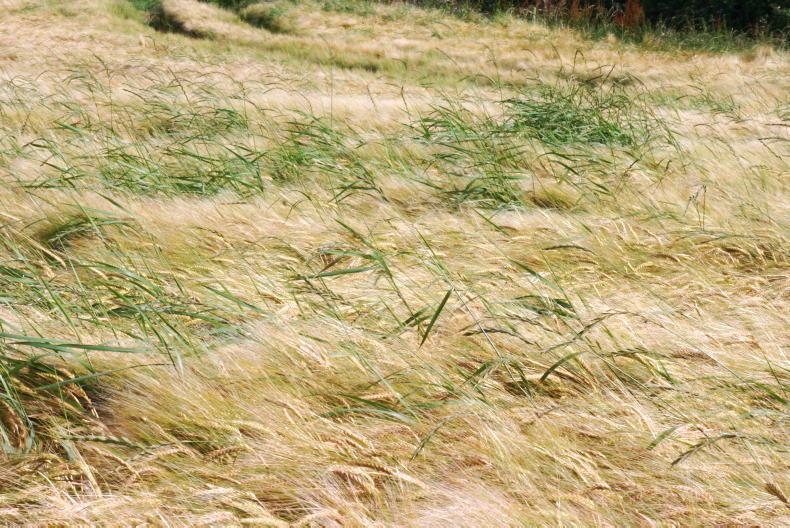
Scutch grass in barley
But farmers and researchers quickly learned that it allowed excellent control of scutch, even with reduced rates, and it also made combining far easier. It lowered moisture in the grain, cutting drying costs and reducing spoilage of grain by fungal attack.
Pre-harvest treatment also allowed faster sowing of the next crop. It’s now a standard treatment for crop growing in northern Europe and elsewhere.
Farmers and particularly contractors quickly realised that spraying off a heavy grass sward ahead of reseeding saved a lot of diesel and resulted in cleaner reseeds.
Uncertainty remains ahead of new glyphosate vote
Glyphosate: ‘debate based on emotion must not overshadow scientific research’
Glyphosate weedkiller is a superhero of farm sprays.
It was introduced 40 years ago, quickly became one of the top-selling herbicides in the world and remains so to this day. No subsequent herbicide has matched it for effectiveness.
Yet EU farmers could now lose it.
The original Roundup brand was launched on the Irish market in the late 1970s. It was aimed primarily at tillage farmers for killing off strong stands of scutch grass ahead of ploughing.
It was introduced as one formulation which was 360g per litre of the active ingredient, glyphosate.

Roundup spray containsthe active ingredient glyphosate. \ Donal O'Leary
Roundup was quickly seen as effective in tackling a grass weed that was otherwise very difficult to control. But it didn’t become an instant hit because its price was so high.
Older readers will recall buying 5l containers of Roundup for £350 plus VAT, the equivalent of €440 plus VAT. At the time, 10-10-20 fertiliser cost the equivalent of €160/t.
Response
The response from tillage farmers was to cut rates back from that recommended on the label.
They explored using various cheaper additives in the tank to help maintain efficacy at lower rates.
These additives were also aimed at countering the herbicide’s one big weakness – its susceptibility to being washed off by rain after spraying.
The label requirement was six dry hours after spraying to get the active ingredient into the targeted plant.
These homemade additives included a squirt of washing up liquid in the tank to increase penetration through the tough leaf and stem of scutch.
Someone, somewhere, somehow discovered that adding a little sulphate of ammonia fertiliser to the spray tank could also maintain efficacy at lower rates.
In the 1980s, Irish tillage farmers took more interest in the formulation of Roundup than in any other plant spray
Even adding a pint of diesel to a 200gal tank helped. It’s fair to say that in the 1980s, Irish tillage farmers took more interest in the formulation of Roundup than in any other plant spray they used.
A number of chemical companies saw a gap in the market and introduced branded additives to be used with Roundup and farmers switched to using these.
Pirate material
The combination of glyphosate’s effectiveness and high price led to the arrival of spurious versions. They appeared in Ireland in the mid-1980s, manufactured on the continent and about 25% cheaper than Roundup.
Monsanto responded by introducing new formulations with better adjuvants which further increased the products’ efficacy. But the competition lowered the price of the basic Roundup product. By this time, it was being bought for about £100 plus VAT per 5l, equal to €25/l.
Off-patent
Glyphosate finally went off patent in Europe in the early 1990s and this led to the overnight appearance of a large number of generic formulations, ie fully legal herbicides containing glyphosate made by other chemical manufacturing companies.
Many new brands went on sale in Ireland, with the best known being Gallup, manufactured by Dublin-based Barclay Chemicals, as well as Pride and Total. Again, Monsanto responded by introducing new, improved formulations of what was now a suite of Roundup products.
By the early 2000s, the price of standard 360g/l glyphosate formulations collapsed to as low as €2/litre.

Cash cow
Monsanto doesn’t reveal the profits made from glyphosate, but it has been a moneyspinner, despite competition.
Monsanto was unusual in that it produced no follow-on sprays that were successful in these islands, other than improved formulations of glyphosate.
This was partly because Monsanto was not a narrowly focused agrochemical company. Since being formed in 1901, its interests varied widely from medical chemicals to electronics to industrial and food chemicals.
It produced DDT in the 1940s, Agent Orange used by the US army in the Vietnam war and further chemicals used in the US armament industry.
Seeds of trouble
In the late 1980s Monsanto began trials of crops genetically engineered to be resistant to glyphosate. Other companies researched other GM traits.
Today millions of hectares of GM maize, soya beans and other crops are now grown around the world.
GM isn’t on the radar of Irish farmers as there are no relevant crops. But it has helped global crop output outstrip global demand in the past decade, lowering crop prices everywhere. The technology has benefited biotech companies and consumers – but not Irish farmers.
In the early 2000s, GM companies, and Monsanto in particular, became the target of environmental campaigners, particularly in the EU.
It didn’t matter that the technology was judged safe by regulators or that it further lowered the price of food. Food was already cheap enough and further reductions don’t entice.
The US company became a focus of fascination and even hatred in leafy, middle class Europe, not unlike Donald Trump in 2017.
This public awareness of Monsanto explains why there has been such a large reaction in the EU to a finding by the WHO that glyphosate is probably carcinogenic to humans. Little attention is paid to many other products in everyday use which are accepted as being carcinogenic.
Uncertain future in Europe
A ban would be a problem for the EU’s tillage farmers, particularly those in Ireland. Farmers would have to use multiple products in multiple applications to grow their crops and would not achieve the same control of weeds.

Irish farmers would face a rise in costs – without any corresponding rise in crop prices. There is no serious move elsewhere in the world to ban glyphosate.
Certain weeds would again become problematic. Scutch grass would re-emerge as a major headache, possibly requiring mechanical control or new rotations. Loss of glyphosate would lead to a further decline in cereal production in Ireland.
Glyphosate had and still has a number of unique selling points. It is what is loosely called a “total” weedkiller. It can kill virtually all annual plants, once timing and rate of application are correct.
It is also very effective against many important perennial weeds that are otherwise very difficult to control, as it moves down into roots, stolons and rhizomes.
It is relatively safe for an operator to use – certainly far safer than many other herbicides Irish farmers used. A number of other total herbicides were sold in Ireland, eg Basta and paraquat. But none could match glyphosate’s control of scutch and other perennial weeds.
Scutch –nightmare in the fields
No conversation about glyphosate is complete without considering scutch grass. It is one of the most challenging weeds that farmers in Ireland and across northern Europe must contain.
It competes strongly with cereals and other crops and is more damaging to crop yield than most other weeds.
A serious infestation can make harvesting difficult, particularly if weather is broken.

The spike or ear of common scutch grass showing the seed spikelets lying flat to the stem.
Scutch is a perennial plant – a serious infestation in a field this year will be worse next year.
Before the arrival of herbicides and particularly glyphosate, scutch was tackled by cultivation and rotation.
Farmers repeatedly harrowed a ploughed field to bring the stringy rhizomes to the headland where they could be manually collected and taken away – a huge cost in diesel. There was no such thing as 100% control.
A mad idea – driving
on the ripe crop
Monsanto obtained approval for other uses for glyphosate from the Department of Agriculture. These included spraying cereal crops pre-harvest and killing off grass swards before reseeding.
Pre-harvest is taken for granted now but on day one this was a revolution which was a bit slow to catch on. After all, it involved farmers driving through crops that were just ready for the combine.

Scutch grass in barley
But farmers and researchers quickly learned that it allowed excellent control of scutch, even with reduced rates, and it also made combining far easier. It lowered moisture in the grain, cutting drying costs and reducing spoilage of grain by fungal attack.
Pre-harvest treatment also allowed faster sowing of the next crop. It’s now a standard treatment for crop growing in northern Europe and elsewhere.
Farmers and particularly contractors quickly realised that spraying off a heavy grass sward ahead of reseeding saved a lot of diesel and resulted in cleaner reseeds.
Uncertainty remains ahead of new glyphosate vote
Glyphosate: ‘debate based on emotion must not overshadow scientific research’






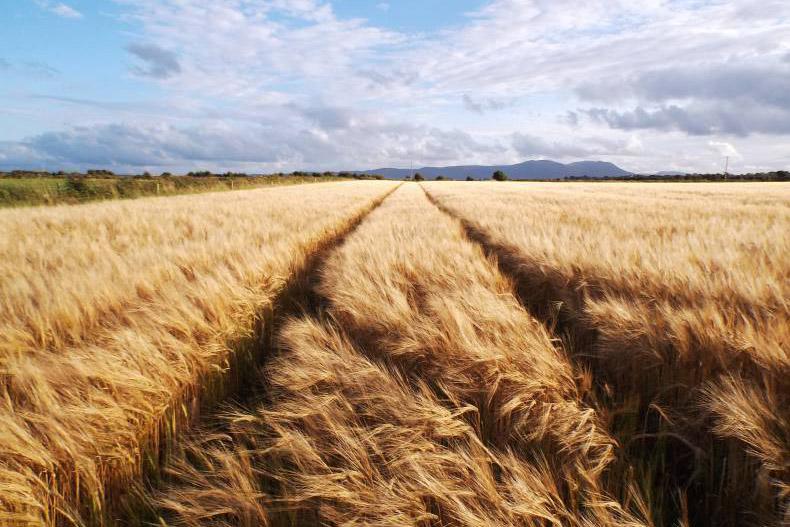




 This is a subscriber-only article
This is a subscriber-only article











SHARING OPTIONS: